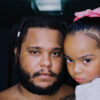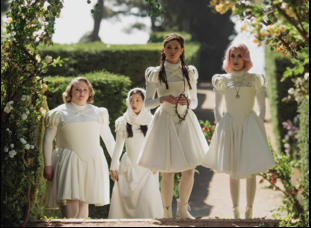When you have an imagination as big as Alice Waddington’s, it’s easy to point out how small others’ can be.
“Imagine all of the action films you watch as a child, and all of the science fiction — all of the alternate universe narratives that can have any sort of protagonist that you can choose. It can be a protagonist without gender, they can be of a race that you make up, it can be a protagonist of any sort of world that you want to invent. And yet, imagine that all you saw as a child was men their enemies while half-dressed,” says Waddington. “It’s hard to grow up around that influence and not want to subvert it.”
As Waddington’s feature debut “Paradise Hills” starts to unspool, you wonder whether there’s a screen big enough to properly present all the ideas that she packs into it, venturing to the titular island retreat in the middle of the ocean where a collection of young women have been sent to rehab by parents who want them to reform their ways. Uma (Emma Roberts) is the most recent arrival, having jilted her fiancé at the altar, but she’s joined by Chloe (Danielle MacDonald), whose mother wants her to more resemble her pageant queen sister, Yu (Awkafina), whose headphones suggest a distance she wants to place between herself and the rest of the world, and Amarna (Eiza Gonzalez), a famous singer who actually may find therapeutic benefits to her stay when out of the intense public glare, though she finds little to enjoy being held against her will with no obvious way to leave. There’s an MC Escher-esque quality to the garden compound run by the Duchess (Milla Jovovich), a headmistress who believes every thorn has its rose — not the other way around — and yet the physical maze that makes Paradise Hills so imposing pales in comparison to the amount of deprogramming the quartet of women must achieve, simply by talking to one another about their experiences, in order to find the strength to escape.
Although the characters are presented a false fantasy at the clinic to embrace to quell any desire to rebel, Waddington finds tremendous power in letting her mind run wild, turning any number of tropes on their ear from the films she saw growing up in which women were reduced to damsels in distress and letting her blazingly original vision alongside her heroines discovering their strength independent of a society that insists that they conform. Their Victorian corsets become armor, their flamboyant hairdos act as extensions of the stirrings going on inside, and by the time Uma’s true love (Jeremy Irvine) shows up to try to rescue her, there’s no going back for her or her new sisters-in-arms to who they once were.
Few burst as boldly out the gate as Waddington, whose impressive short “Disco Inferno” may have drawn a buzzy cast to her first feature like moths to a flame and secured a budget to see her vision through properly, but still doesn’t quite prepare you for what she actually pulls off in “Paradise Hills,” and on the eve of the film’s release following a celebrated premiere earlier this year at the Sundance Film Festival, the filmmaker spoke about making the film she’s wanted to see since she was a teenager, being able to express a range of experiences through the ensemble of characters she created and the real world inspirations for a place unlike any you’ve ever seen before.
“Paradise Hills” is definitely an homage to my 12, 13, 14-year-old self, the same teenager that was a bullied person and loved “Lord of the Rings,” but could never see herself in those narratives, so I decided to insert myself a little bit. [laughs] I also wanted to see my friends in them, so that was really the reason because I have cousins that are the same age and I see the insecurity that they have due to this obsession [with youth] and putting a window in their hands that tells them that they are never going to be beautiful or popular enough, so it was important to me to share what I learned from my own image-based/social network insecurities with them.
Since the group of young women show a diversity of experiences, did you start out thinking of a single character and the rest grew out of that or were you always thinking about the group dynamic?
The film was always going to be a very choral story, and I definitely wanted to play within the realms of the story that had women be their own heroes and how female friendship can defeat monsters, because the actual beast in this narrative was female competition, so it was always going to be all of these princesses coming together and that collaboration between women, no matter their age, would be the hero. Of course, when you set out to make a very female film as we did, you’re going to have women that are terrible and women that are amazing. [laughs] And men who are terrible and men who are marvelous — the most positive influence in the film is this white 50-year-old man who is [Uma’s] dad and the most negative influence is this woman [The Duchess] in a position of power, so it was interesting to approach sorority in a way that was complex and empathetic towards every character, even the ones that weren’t part of the friendship dynamic.
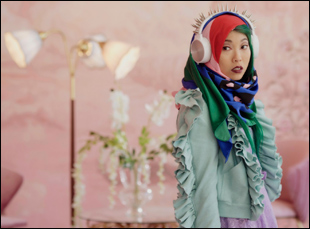
It was interesting to see the first dinner they all had together, for which the producers and I were present because I remember talking after the fact with the [actresses] about how each one of the roles that each one them had been cast for was sort of akin to some of the traits of their personality — like Awkwafina, for example, has mentioned how she connects to her character’s anxiety because she suffers from it as well, and Eiza has this personal background of being a pop star in Mexico, being [frozen as] a teenager essentially and having to self-police her behavior and her art as well to please other people. And Emma is a very brave person — she described joining the film as an experiment, and her character is also very bold and brave and that’s what makes her the unspoken leader of the group in a certain sense. So there was something each one of them had in common with their characters. So all of these dynamics translated into a group dynamic and they really all work hard on becoming a group. Every weekend, Emma would choose a restaurant and they would all go to the casino together – and Jeremy [Irvine] would drive them. [laughs]
Thinking of how you may have brought out character traits that were inherent to the actresses, did the song that Amarna, Eiza’s character, sings come in collaboration with her?
Without spoiling too much, Eiza’s song is about the relationship that their characters have in the film and there is two iterations of this song – one that opens the film, which seems like a definitive one, and then we see Eiza Gonzalez sing it [later] and it’s a completely different story, it’s a different tempo, it’s a different emotion, and hopefully a relationship within the film. I wanted these two pieces to be connected very intimately, and Lucas Vidal, our composer, was very generous in his process and he let everyone who had a part in the screenwriting process have a part in the writing of the songs as well, so it was really fun to write a song. I actually already wrote a song with Aaron Rux, a Spanish electronic musician who wrote the music for [my previous film] “Disco Inferno,” so I [used] songs as character moments before and Lucas used references that were in common with mine, from electronic pioneer Delia Derbyshire, who wrote the first opening for “Doctor Who” back in the 1960s for the BBC to Canadian musician Mort Garson, also from the same time, and he bought a bunch of electric synthesizers from this time to make the music for this film. It was definitely a very creative and collective process.
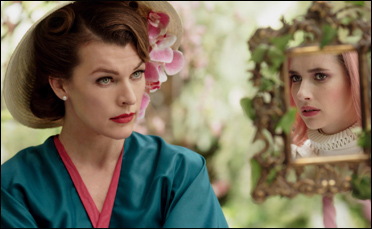
Our sound designer is Oriol Tarragó and he’s a wonderful person that has worked for Guillermo del Toro for “Devil’s Backbone,” and with J.A. Bayona for the latest “Jurassic World” films, so he really is a master of making the film grow in the post-production process, creating moods and psychological tension. He was involved in the film since really early on, so he’s the kind of person that will tell you we need to design this specific metallic screeching sound for a certain element of the story I won’t spoil, so that people recognize it 20 minutes later in this very important moment. [And then he’ll tell you] “We can say this without words, just the sound texture, and I’m going to go to this psychiatric hospital a hundred miles from the center of the city to get this specific medical utensil to be able to make this specific sound, so people will really be into that moment.” [laughs]
I just watched it at Sitges with 1200 people and the film sounds like a heavy metal concert. We’ve had people at other screening rooms tell us it’s mixed at 10 instead of the usual, which is five, which means that he just gave it his all, and we wanted the sound to be this overwhelming experience that sucks you into the film from the first frame and lets you go in the last one because it’s part of this aspect of brainwashing that the film plays with.
This is my favorite kind of fantasy film where there’s one foot in reality, but it’s the blend of inspirations for this alternate universe where there’s different times and cultures mixed into one. Was there something you could hold onto as a center to figure out the internal logic?
One of the greatest challenges of this film really was to create a new world within ours, meaning we were using real locations. We were shooting in in Barcelona and the Canary Islands, so we had to do the most with what we had and the production design team really had to combine brutalist 1960s retrofuturistic Space Age references with modernism, which is like a Catalan brand of art nouveau with Middle Eastern styles, for example. And it had all to seem credible, [where it felt like] this world had all actually taken place and we were doing a historical film based upon it, like something had gone historically wrong, [where] a war had been lost or won in a different way. So our production design team, which was very female, led by Laia Colet, were referencing anything and everything that was originally very male, like “Logan’s Run” or “The Prisoner,” mixing it with very soft, female historical film references such as “Picnic at Hanging Rock” or “Daughters of the Dust”
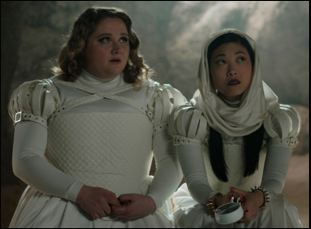
We wanted to just tell a story without visual limitations and the costume design team handmade 200 costumes by hand — [and] especially when you have action scenes, it’s really interesting to see how you have to make at least three copies of each. Like one in its proper prime state, one the middle, and then the third one is absolute destruction. [laughs] And I try to direct sets and costumes in the same way I direct actors, which is by giving some primal emotions which are universal. With the very elaborate Victorian nightgowns that the girls wear throughout the film, I would say, “Make this be more infantilizing,” for example, or “Make the corsets be more oppressive,” and when I would say that, sometimes I would reference specific designers. Alberto and I both love Ires Van Herpen and Alexander McQueen and those were guiding lights in that sense, and sometimes I would just send him a picture, but other times he [would say], “Let’s make a nod to midcentury mental institutions for women. How can we translate it in a way that’s stylized and looks historical, but isn’t from that century?” So there was a lot of that sort of scrapbooking, choosing textures that were emotionally right for this story.
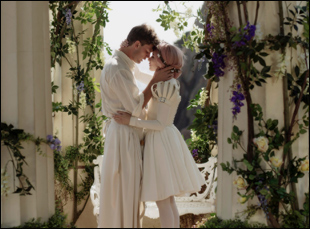
Listen, I didn’t go to film school and I didn’t get to have what’s considered a standard film training. What I got to do was watch films. My parents were big science fiction nerds. My mom’s favorite film is “Metropolis,” but she also loves “Blade Runner,” and the first time I watched “Clockwork Orange” was with them and we’d talk about it. My dad had a film club at university, which he played British and French films that were sometimes banned by the Franco dictatorship. So we were always fans. And coming from a small town — Bilbao, in the north of Spain — [filmmaking] is not something that happens there, so it was really incredible to be able to work with people that had made films since they were six, seven years old, and there was nothing I could teach them. All I could do was try to be humble enough to let them be my teachers and let them guide the process. Of course, I feel like every woman deals with imposter complex. The other day I was reading an interview with Jennifer Lopez and she said that and I thought if Jennifer Lopez feels like she has imposter complex, so can I. [laughs] I’m allowed.
“Paradise Hills” opens on October 25th in limited release including Los Angeles at the Monica Film Center and New York at Cinema Village. It is also available on iTunes.


